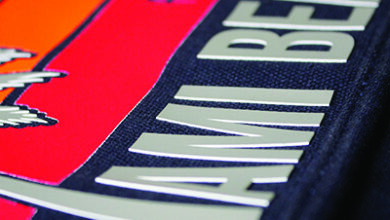Traditional ink contains certain pigments to achieve color. Conversely, sublimation ink is made up of dye solids that are suspended in a carrier fluid. This gives sublimation ink a high viscosity, which is why printers designed for use with traditional pigment ink or office inks have difficulty passing dye-sublimation ink through the nozzles and print heads.
Sublimation inks must be manufactured with a given printer in mind. Not every inkjet printer can process sublimation ink. For example, some print heads use heat, which can cause premature gassing of the dye solids in the ink.
Additionally, head jets, pressure systems, and internal tubing must be able to handle the inks without having their composition degraded in the process.
-Jimmy Lamb, Sawgrass



